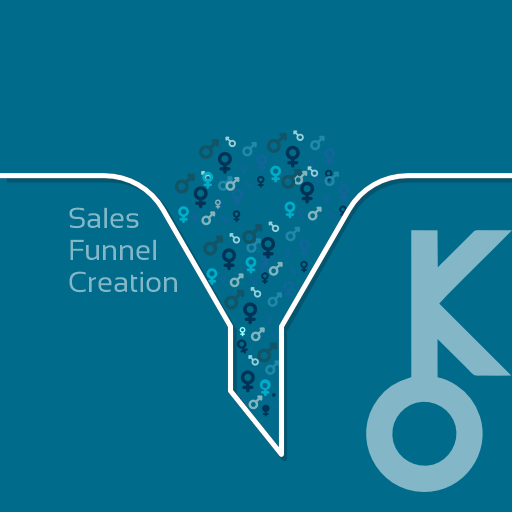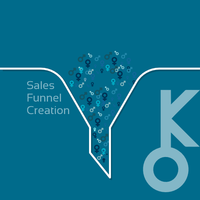Understanding the Sales Funnel: Stages of a Sales Funnel

A sales funnel is a visual representation of the customer journey from initial contact to making a purchase. It illustrates each stage of the process and helps businesses understand where potential customers may drop off or become disengaged.
Understanding the stages of a sales funnel is crucial for effective marketing and sales strategies. It allows businesses to identify their target audience, tailor their messaging, and make strategic decisions when it comes to converting leads into paying customers.
Here are the key stages commonly found in a sales funnel:
1. Awareness
This is the topmost stage of the sales funnel, where potential customers become aware of your brand or product. At this point, they may have encountered your advertisements, content, or referrals from others.
Strategies at this stage:
- Focus on creating brand awareness through various channels such as social media advertising, search engine optimization (SEO), content marketing.
- Develop engaging and informative content that educates prospects about their pain points and how your product can solve them.
- Utilize lead magnets like eBooks or whitepapers to capture email addresses and build an email list for future nurturing.
2. Interest/Consideration
In this stage, prospects have shown interest in your offerings and actively seek more information about your products or services. They are evaluating whether you meet their needs better than your competitors.
Strategies at this stage:
- Create targeted marketing campaigns that speak directly to prospects' pain points and convince them why you're the best choice.
- Offer free trials, demos, or consultations so that potential customers can experience what you have to offer firsthand.
- Collect contact information through opt-in forms on landing pages dedicated to specific products/services.
3. Decision/Evaluation
At this point in the sales funnel, prospects are close to making a purchase decision but may still be comparing different options available in the market. They evaluate the features, pricing, testimonials, and reviews of your product/service.
Strategies at this stage:
- Provide detailed product/service information on your website.
- Offer case studies or success stories that highlight how your offering has benefited others.
- Implement lead nurturing tactics like personalized email campaigns to further educate prospects about your product/service's value proposition.
4. Action/Purchase
This is the final stage of the sales funnel where prospects convert into customers by making a purchase. They have evaluated all options and feel comfortable choosing you as their solution provider.
Strategies at this stage:
- Simplify the purchasing process by optimizing checkout pages for ease of use.
- Provide transparent pricing and clearly outline any guarantees or return policies.
- Use personalized follow-up emails to thank customers for their purchase and provide additional support if needed.
5. Retention/Advocacy
The sales funnel doesn't end after a customer makes a purchase. The goal now is to retain them, build loyalty, and turn them into advocates who promote your brand through word-of-mouth referrals.
Strategies at this stage:
- Offer exceptional customer service to exceed expectations.
- Implement loyalty programs or referral incentives to encourage repeat business and referrals.
- Collect feedback through surveys or reviews to continuously improve the overall customer experience.
Understanding each stage of the sales funnel helps businesses identify opportunities for improvement, optimize their marketing efforts, and increase conversion rates. By tailoring strategies specific to each stage, businesses can effectively move prospects through the funnel towards becoming loyal customers.
Sponsored
Sponsored
Sponsored
Explore More:

The Impact of AI and Machine Learning
As technology continues to advance at a rapid pace, businesses are constantly looking...

Future of Sales Funnels
The future of sales funnels is an exciting and promising concept for businesses...

Lessons Learned from Failed Funnels
In the realm of sales funnel creation, case studies serve as valuable resources...

Successful Sales Funnel Examples
In sales funnel creation, case studies play a crucial role in demonstrating the...

Case Studies in Sales Funnel Creation
In the world of sales and marketing, case studies play a crucial role...

Sales Funnel Recovery Strategies
Sales funnels are a critical component of any successful sales and marketing strategy....

Improving Funnel Efficiency
A sales funnel is a crucial component of any business's marketing strategy. It...

Identifying Funnel Leaks
A sales funnel is a systematic approach to guiding potential customers through a...

Sales Funnel Troubleshooting
Sales funnel troubleshooting is the process of identifying and resolving issues or bottlenecks...

Sales Funnel Tools and Software: Landing Page Builders
Sales funnels are essential in driving conversions and increasing revenue for businesses. To...

Sales Funnel Tools and Software: Email Marketing Tools
Sales funnel tools and software refer to the various technologies and platforms available...

Sales Funnel Tools and Software: CRM Software
Sales funnel tools are software programs or applications designed to help businesses track...

Sales Funnel Tools and Software
A sales funnel is a framework used by businesses to guide potential customers...

Measuring Sales Funnel Performance: Analytics and Reporting
Measuring sales funnel performance analytics and reporting is a crucial aspect of any...

Measuring Sales Funnel Performance: Sales Funnel Metrics
Measuring the performance of your sales funnel is crucial for understanding the effectiveness...

Measuring Sales Funnel Performance: Key Performance Indicators (KPIs)
Measuring the performance of a sales funnel is crucial for any business aiming...